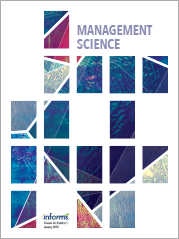Management Science, vol. 53(3), pp. 469 – 482. (2007).
Autores: Han Bleichrodt, José María Abellán-Perpiñán, Jose Luis Pinto-Prades, Ildefonso Méndez-Martínez.
Abstract
This paper explores inconsistencies that occur in utility measurement under risk when expected utility theory is assumed and the contribution that prospect theory and some other generalizations of expected utility can make to the resolution of these inconsistencies.
We used five methods to measure utilities under risk and found clear violations of expected utility. Of the theories studied, prospect theory was the most consistent with our data. The main improvement of prospect theory over expected utility was in comparisons between a riskless and a risky prospect (riskless-risk methods). We observed no improvement over expected utility in comparisons between two risky prospects (risk-risk methods). An explanation for the latter observation may be that there was less distortion in probability weighting in the interval [0.10, 0.20] than has commonly been observed.

